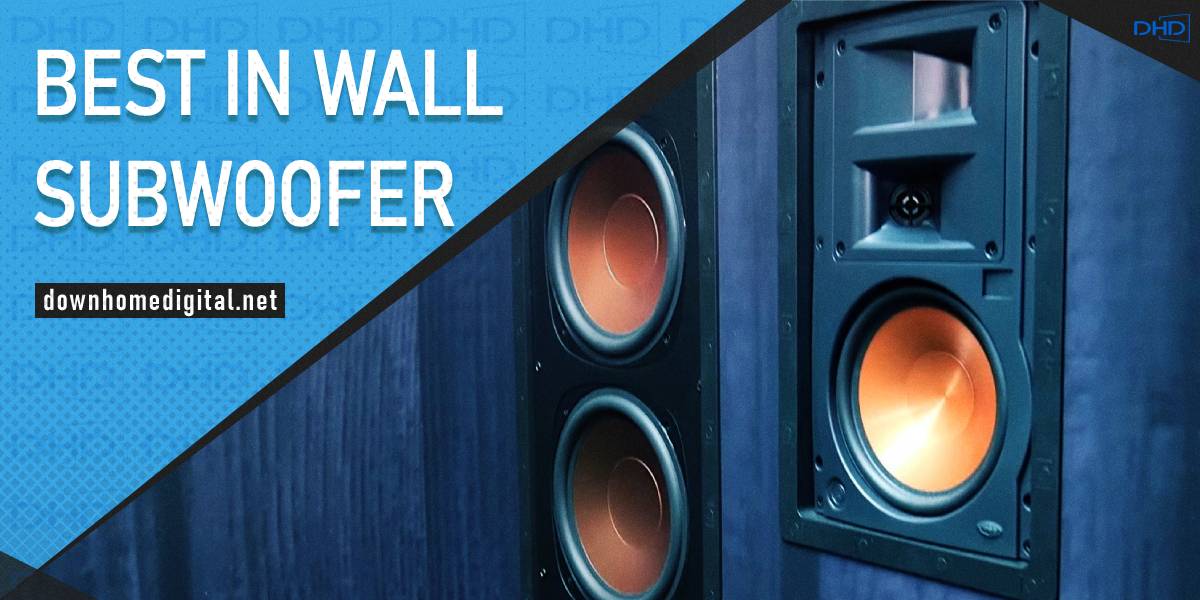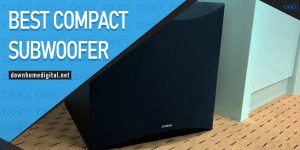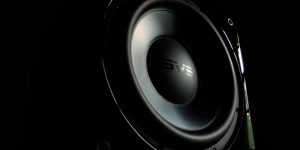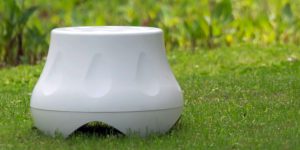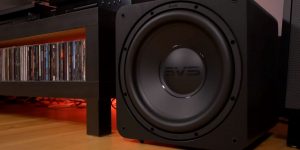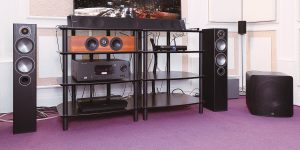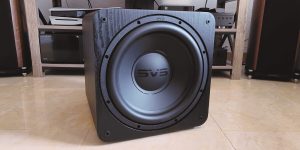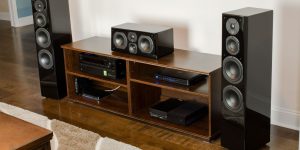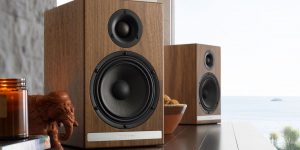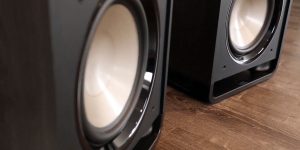Among various subwoofers, some models can be installed into the wall. Such a solution really has a positive effect on the overall sound picture and saves space in the room. But how to choose the best in-wall subwoofer among the huge number of options? And I will help with my review, which is devoted to this topic. But first, a few words about the types of such devices.
There are two basic types of built-in speakers: “In-Wall” and “In-Ceiling” models. In wall subs are optimized for installation on hollow walls, whether it is a wood panel, MDF board, or plasterboard (plasterboard, BA13). They are suitable for home cinema integration with the front speakers on either side of the screen and the center speaker below the screen or even behind, in the frame of the screen.
Built-in ceiling speakers are often smaller and designed to be installed on hollow ceilings (false ceiling, wooden plate, etc.). They are intended for the distribution of background music in spacious rooms (e.g., stores, restaurants, etc.). Also, such models are often used as part of a home theater in conjunction with surround sound speakers.

In-wall subwoofer reviews comparison table
| Name | Power, W | Driver size, inch. | Frequency response | Review |
|---|---|---|---|---|
| Monoprice Fiber in-Wall Subwoofer best overall | 300 | 10 | 33Hz-230Hz | Review |
| OSD Audio SL800D also a great choice | 100 | 8, 10 | 40Hz-500Hz | Review |
| Klipsch RW-5802 II premium | 300 | 8 | 45Hz-140Hz | Review |
We don’t recommend
Pyle PDIWS10
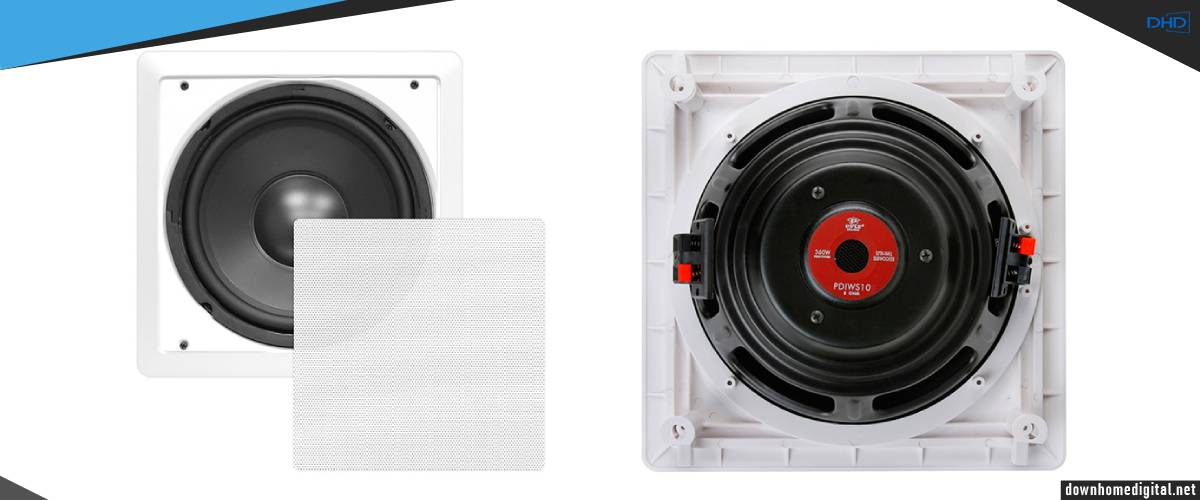
Cons
- Plastic supports are not strong enough.
- Pretty outdated model.
- It requires an additional amplifier.
- There are certain difficulties with its installation.
Best in-wall subwoofer reviews
Monoprice Fiber – best overall

If you wish to make a wonderful home theatre and just a place to enjoy your favorite music, you need a decent wall mounted subwoofer. Monoprice Fiber is a nice option to consider. You will not have difficulties in installing it even by yourself. With this unit, you receive instruction on mounting the proper size of a hole. This model has a 10-inch driver with a power output of 300W. If you need a smaller passive in-wall subwoofer, Monoprice offers a range of models with the smallest of 5.25-inch drivers with 100W of power. Together with a passive subwoofer, you receive a cutout template. With it, you easily mark the wall and perform the cutting. Then, with just a screwdriver, you can properly place a speaker into the wall.
Another side of this in-wall subwoofer that you will like is the reliability of the Monoprice Fiber. It is made from Aramid fiber, which is similar to DuPont Kevlar fiber products, which are ready to serve you for many years. It has minimum polymers, which means that there will be less sound distortion. Carbon materials also improve the depth of bass and sound quality. The front grille properly protects the subwoofer from dust. Moreover, it can be painted in your favorite colors without worries.
I do not believe what is written on the manufacturer’s website or the box/instruction manual, and I check every detail personally. For all the unexpected pluses of this inexpensive in-wall subwoofer, it has drawbacks. The wings holding up the drywall are cheap and flimsy, and I recommend you make special reinforcements. With constant (or regular) use, they are bound to rip the speaker out of the wall. If your walls are concrete, I would still recommend metal plates.
The sub performed well in sound, and the internal components were made responsibly. It doesn’t wheeze and has enough power to indicate bass accents in music, only if you don’t like heavy metal. There, it didn’t perform properly, drowning out particularly powerful moments.
The Monoprice Fiber combines a compact design, decent power, and low price. Therefore, it will appeal to many fans of this type of speaker. The best part is its sound, which is clear and crisp, but in too serious bass parts, it gets a bit lost (not terrible for its price). Installation is so easy and explained by the manufacturer that you can easily handle it. Still, the wall-mounting wings are weak, and I recommend replacing them with metal ones so that the speaker doesn’t get ripped out of the wall at the most interesting moment.
Key specs
- Power, W: 300.
- Driver size, inch: 10.
- Frequency response: 33Hz-230Hz.
Pros
- It is made from reliable materials to serve you for many years.
- You will not spend a lot of time to install and start using the subwoofer.
- Nice design that fits different interiors.
Cons
- Wings that hold the drywall are cheap and fragile.
OSD Audio SL800D – also a great choice
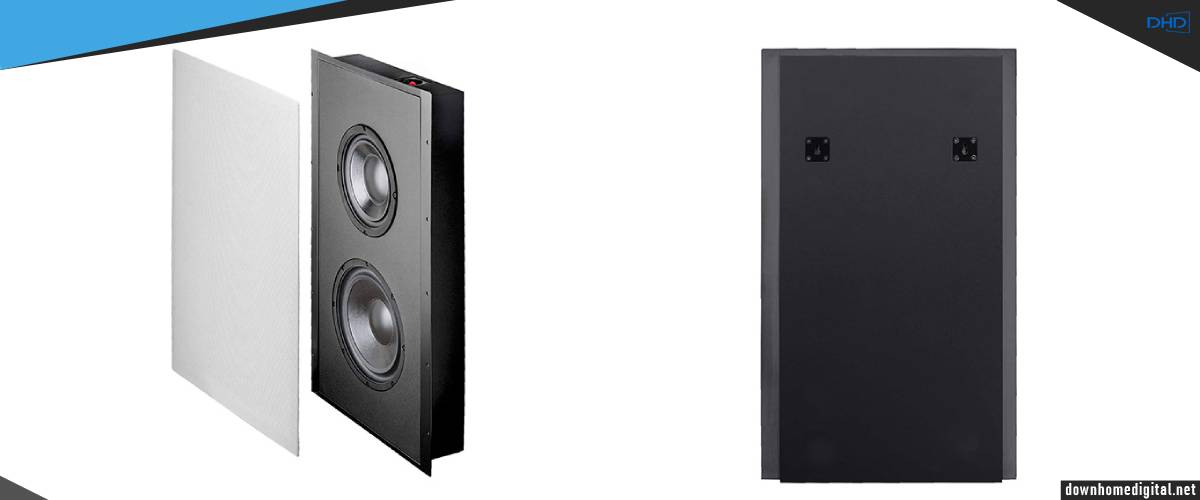
While trying to find the best in ceiling subwoofer, it is definitely better to review several options before a final decision. Another model that you should review is SL800D from OSD Audio. This manufacturer has a world known fame in providing a great variety of speaker and sound connected equipment.
There are several reasons why you may want to get this model. In the beginning, it does not require a lot of space in the hole. It has an 8-inch woofer driver and a 10-inch passive radiator in flat profile housing. Moreover, on the front side, the grille covers and protects the subwoofer. To match various interiors, you are free to paint the grille in the preferable colors. If you do not want to make a hole in the wall, SL800D also properly operates in a standing mode.
Then, you will be pleased with the sound and bass quality. With a 300W output response, you receive accurate and clear sounding even at low frequencies. The passive 10-inch radiator assists in sound-producing by reducing vibrations and sound distortions. I liked the way it felt when using home theater. If you’re not a fan of having your floor shudder with sound or your system is small, it will do the job well. Music like The Beatles or Metallica also performed wonderfully, and for me, it fully justified its price.
The OSD Audio SL800D is not as simple as the Monoprice Fiber, but it is well worth its money. You can build it into the wall, leave it upright, or cover it with a grille. Either way, it delivers deep and clean bass, enough for complex, rich, but not heavy music like good old classic rock. An 8-inch woofer and a 10-inch radiator do their job, justifying the investment. And in the end, we have a compact, beautiful design.
Key specs
- Power (RMS), W: 300
- Driver size, inch: 8, 10.
- Frequency response: 40Hz-500Hz.
Pros
- You receive clear and deep bass.
- This is a dual-mode with a woofer and radiator to enhance sound quality.
- Compact size and design.
Cons
- You need an additional amplifier to use the subwoofer.
Klipsch RW-5802 II – premium

And now, I’ll introduce you to the Klipsch RW-5802 high-performance enclosed subwoofer. Like other representatives of integrated acoustics of this brand, this model is mounted flush with the wall. This type of installation has several distinct advantages: firstly, it takes almost no space. Secondly, the wires from it are also in the wall, and thirdly, the sound is evenly distributed inside the room, not “spreading” to neighboring rooms.
In-wall passive subwoofer The Klipsch RW-5802 II has serious power. With one speaker running and an 8-ohm load, it delivers 300 watts of the bass sound. When two speakers are running, and the load is 4 ohms, the subwoofer delivers as much as 500 watts of sustained power. By the way, the bass driver’s cone is made of ceramic metal, and the sealed MDF case allows you to get the sound at the output without losing quality. A white grille is attached to the RW-5802 II casing with magnets.
The Klipsch RW-5802 II delivers deep bass thanks to its two 8-inch bass drivers. They have hard Cerametallic cones specially treated with aluminum, anodized or electro-chemically converted to ceramic on both outer surfaces. This ceramic composition allows the buffers to move at high speed without blurring the sound.
Combined with the RSA-500 subwoofer amplifier, this passive in-wall subwoofer can perfectly complement any home theater or two-channel system. It is also fully compatible with the new Reference series of in-wall and in-ceiling speakers.
When I tested this model, I understood why in-wall subwoofers reviews about it were positive and enthusiastic! It really showed its power! No wonder it costs almost 10 times the price of the Monoprice Fiber. It’s a monster compared to other models. It can do the most complex Pink Floyd acoustics; I even remember my early youth and cranked-up Manowar. My crew and I wriggled in grimaces, imitating solos with hard distortion. But all of that is lyrical. The quality is really worth the money. I could hear every beat and its echoes, and the instruments went wild.
This powerful in-wall subwoofer is the undisputed leader in the premium segment today. It’s easy to install, made of durable, high-quality materials, and, most importantly, it delivers hard-hitting, powerful sound. You can count on it not only in the toughest music genres but also safely entrust it to a movie like Transformers or Marvel. Two 8-inch active ceramic woofers in a sealed MDF case can withstand any load. The only downside to the Klipsch RW-5802 II is that it doesn’t work with all amplifiers.
Key specs
- Power (RMS), W: 300.
- Driver size, inch: 8.
- Frequency response: 45Hz-140Hz.
Pros
- Two 8″ Cerametallic active woofers.
- Sealed integrated MDF cabinet for maximum installation flexibility.
- Incredibly powerful.
Cons
- Does not work with all types of amplifiers.
OSD IWS10
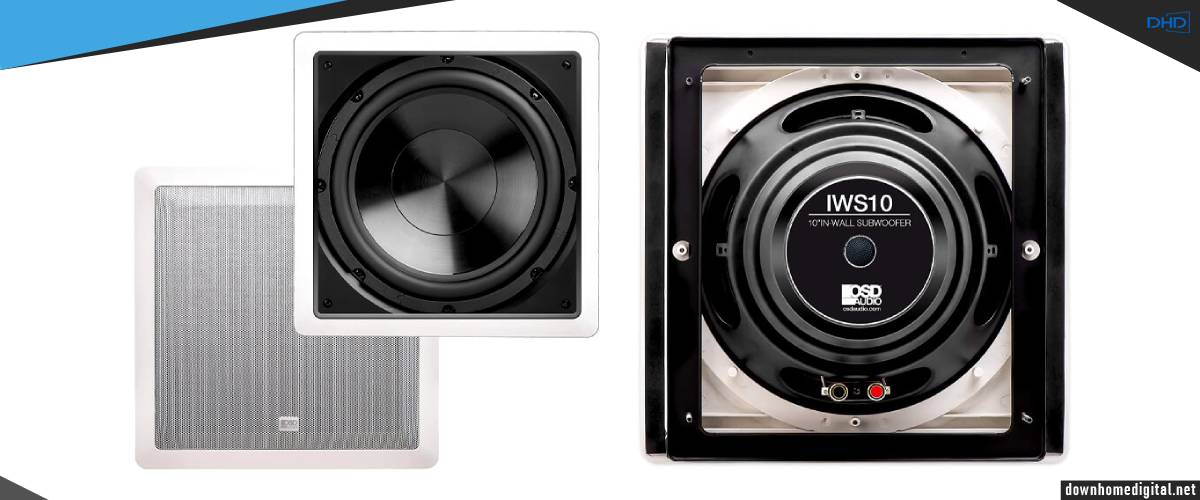
The OSD IWS10 is next on my list, which is a 10″ passive subwoofer with up to 200 watts of power. And first of all, I draw your attention to the ease of installation of this model. Thanks to the special easy mounting bracket, fastened to plasterboard, this procedure will take minimum time and effort. By the way, the grille can be painted to match the design of your room. Overall, it strongly resembles the Monoprice Fiber and would be an alternative, as it is identically priced.
The OSD IWS10 is designed to reproduce even the lowest of audible frequencies. When I tested it, the sound was really good, and I was satisfied. I heard nothing supernatural, but I can’t say anything bad about the sound quality. This low-power sub may do the job if you prefer background music without noise. But for a raucous party, it lacks data.
You will need an amplifier to power this model because it uses a passive speaker. The manufacturer recommends using OSD SMP500 – a special amplifier for the subwoofer with an RMS power of 400 W at 4 Ohm impedance.
Yes, this model may not be among the top 5 best in-wall subwoofers, but it is worth your attention. You can easily install it, and with enough features and power, it will give you an enjoyable experience while watching movies and more. But since the 10-inch sub is passive, you’ll need an amplifier (extra cost). The frequency response of 38Hz – 200Hz speaks for itself; it doesn’t have the lows that more expensive models are capable of. If you decided to accompany it with the movie Arrival or the TV series The Darkness, the humming long sounds would seem like the work of a gardener 4 houses away. For quiet background music, it will sound as good as your headphones. So, after paying a price of up to $100, you shouldn’t criticize it too much. Don’t expect too much, and you won’t be disappointed.
Key specs
- Power (RMS), W: 200.
- Driver size, inch: 10.
- Frequency response: 30Hz-150Hz.
Pros
- 10″ polypropylene subwoofer.
- butyl rubber surrounds.
- very convenient “Easy In” mounting bracket.
- built-in rear dust shield.
Cons
- Sometimes there is a “rattling” of the bracket.
How to install an in-wall subwoofer?

To install an in-wall sub, you need to have holes in the wall or to make them by yourself. Before making a hole to install a built-in speaker, make sure that the wall or the ceiling is well hollow. It can be in decorative panels (wood, MDF panel with veneer) or plasterboard (BA13 with or without insulation). Several precautions can be taken in the case of installation in an already existing dwelling.
For example, it will be necessary to cut off the power to the room where the work is carried out to reduce the risk of electric shock in the event of an electrical cable cut behind the partition. Likewise, the use of a metal detector and electric current will allow drilling in complete safety. It should also be noted that the manufacturers of in-wall speakers provide templates to facilitate the drilling. Once the drilling has been done, take care to line the back wall with an absorbent.
To install an in-wall passive subwoofer, you will need to power it with an amplifier, as passive models do not have it inside. After having made the drilling, it will be necessary to mark the phase of the cable (+) to use the same on the whole installation. You should also ensure that the cables are sheathed in the partitions to comply with French construction standards. The use of a specific speaker cable (OFC) is preferable. It is also a good idea to provide an additional length of cable for a comfortable connection of the speaker before putting it in position.
Some in-wall speakers may be fitted with infrared (IR) repeater sensors. Besides, it will be necessary to think about making a cable passage (telephone pair) near the enclosure to connect the sensor.
For models equipped with a 100V transformer, you must choose the power consumed so that all the speakers placed on this line make a total a little less than the power of the amplifier. This technology allows many loudspeakers to be put in parallel on a single amp with large cable distances.

